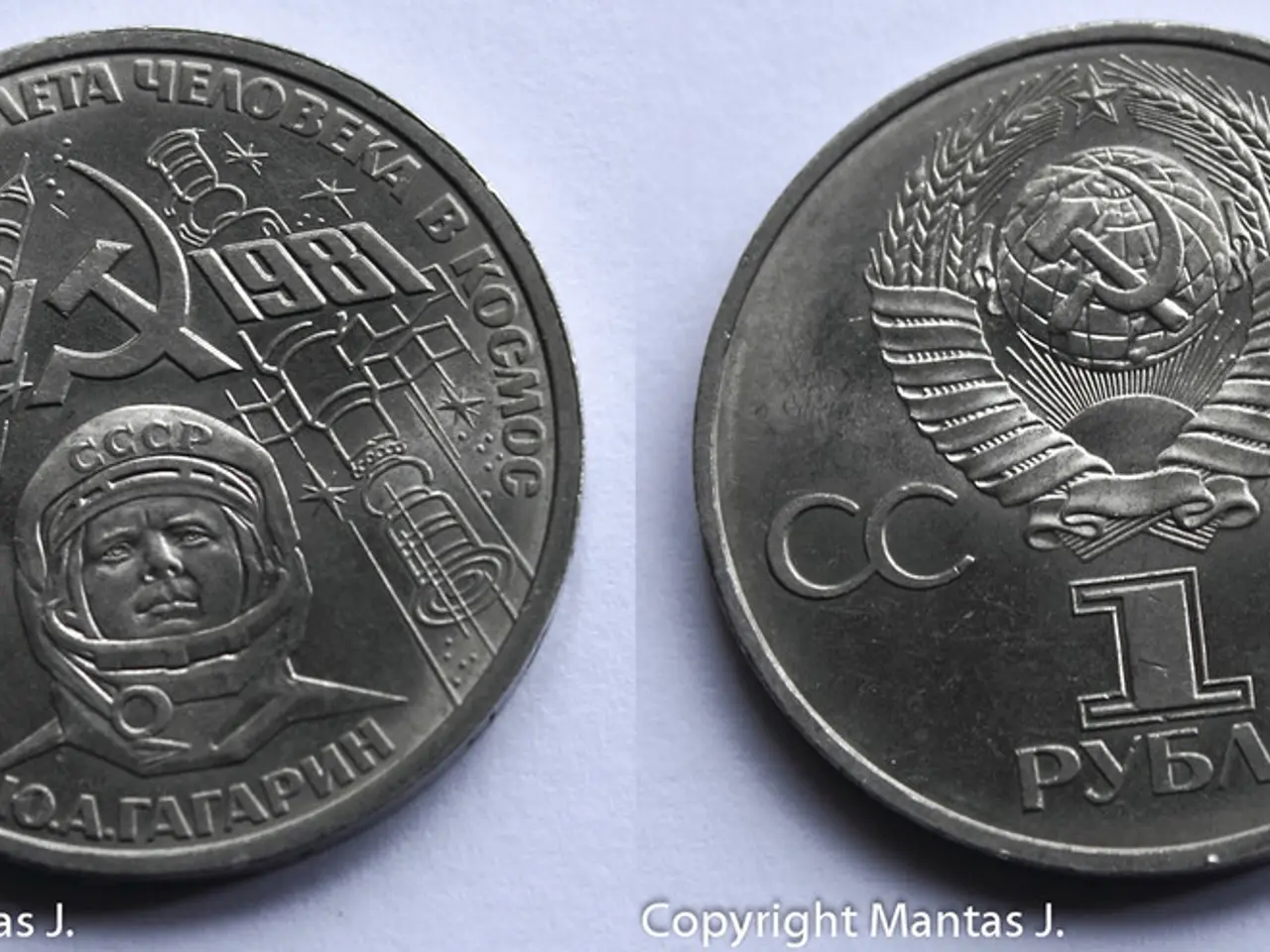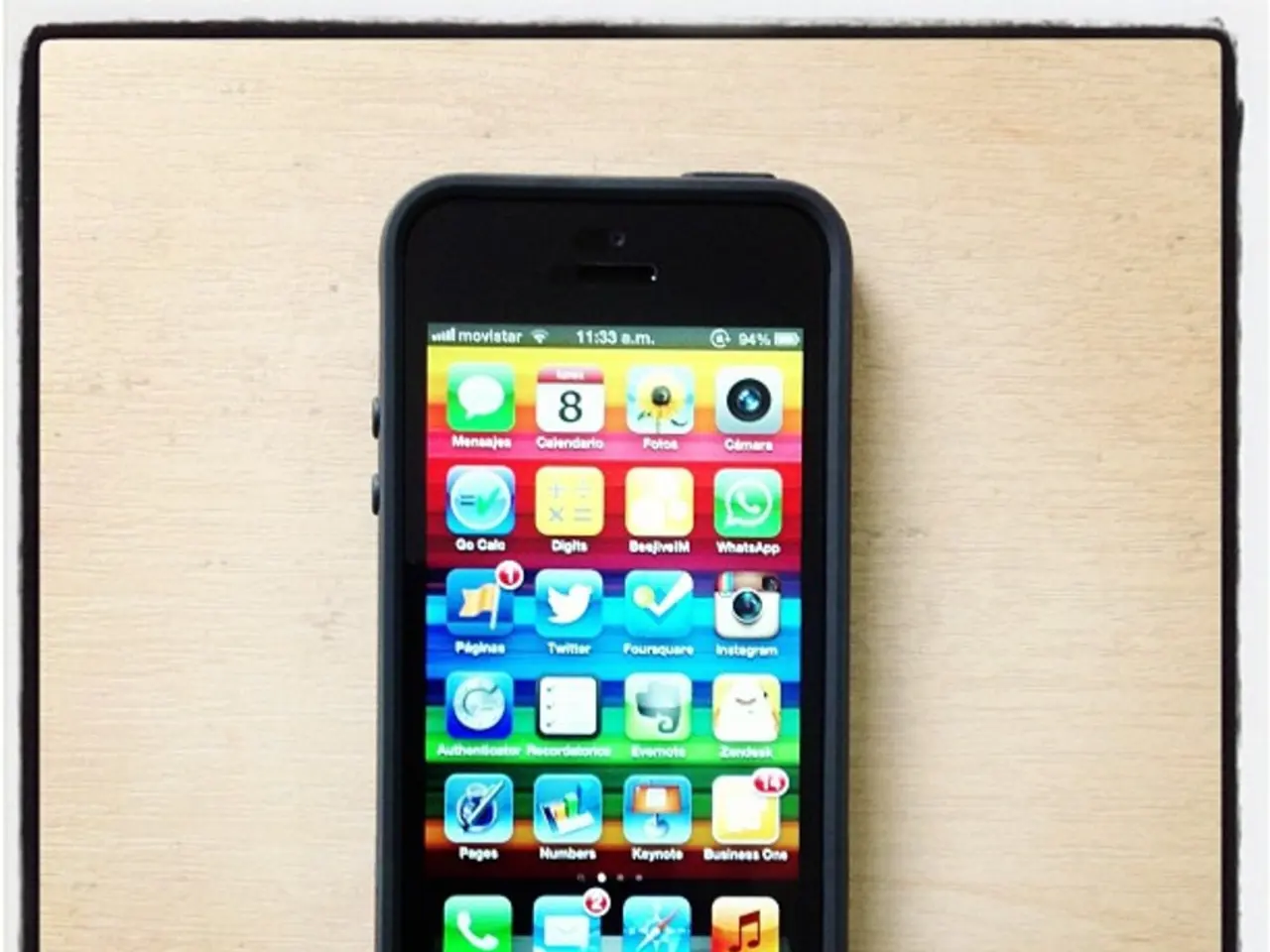BRICS currencies are not viable substitutes for the U.S. dollar in global transactions
In the ever-evolving world of global finance, a significant shift is underway as countries move away from the US dollar's dominance. This trend, known as de-dollarisation, is being driven by geopolitical tensions, technological innovations, and the rise of alternative currency blocs, such as the BRICS nations.
The BRICS group, comprising Brazil, Russia, India, China, and South Africa, is actively pursuing a more multipolar international monetary order. According to recent studies, the group is coordinating alternative payment systems and considering the development of a BRICS digital currency or currency bloc to reduce reliance on the US dollar.
One of the key drivers of this shift is the decline in the dollar's share in global reserves. The dollar's share has fallen to multi-decade lows (~59% down to 40–45% forecast by 2040), while the euro and yuan are gaining prominence. The yuan's share may even triple by 2035 due to increased trade invoicing in Chinese yuan and expanding bilateral currency usage among BRICS and other countries.
The process of de-dollarisation is expected to unfold in four distinct phases. We are currently in the second phase, which involves technological acceleration through central bank digital currencies (CBDCs), stablecoins, and alternative payment infrastructures. The third phase, geopolitical fragmentation, is projected between 2024 and 2027, during which BRICS+ countries may coordinate payment systems in response to increased sanctions and tariffs. The final phase, structural transition, will see the emergence of multipolar currency blocs and the operationalisation of alternative reserve systems by 2035 or later.
However, it's important to note that China is not yet ready or willing to play the role of a Brics vehicle currency. The renminbi's share in the special drawing rights basket is close to 12%, but a common Brics currency backed by gold was not discussed at the July Brics summit in Rio de Janeiro.
In the absence of a political agreement on a common Brics currency, a trustworthy vehicle currency might emerge for settling Brics trades, but it is not expected to replace the dollar. The lion's share of cross-border financial transactions still occurs in major currencies, such as the dollar, and global banks, corporations, and investors have shown little interest in abandoning these currencies in favour of Brics national currencies.
The global foreign exchange market, worth $7.5 trillion a day, equivalent to a year's trade in goods and services in just five days, reflects this dominance. A clearing institution like the European Payments Union after the second world war might be necessary to address the settlement of imbalances in Brics cross-border transactions.
Artificial intelligence could potentially replace the dollar's denomination function, converting national currencies into a weighted unit like a basket of currencies from BRICS countries. However, no mechanism has been devised to settle imbalances in the Brics cross-border transactions.
In conclusion, de-dollarisation is progressing through technological, geopolitical, and institutional channels, with the BRICS countries actively proposing and piloting alternative currencies and payment systems. This includes collaborative digital currency projects and trade in non-dollar currencies, marking a shift from previous dollar-centric global finance. The US dollar remains dominant but is facing growing competition.
References:
[1] Poenisch, Herbert. "De-dollarisation and the Emerging Multipolar Currency Landscape: The Role of BRICS." Zhejiang University, 2023.
[2] Smith, Gary, and Udaibir Das. "The Unlikely Prospect of a Brics Financial Governance." OMFIF, 2022.
[3] "The Decline of the US Dollar as the Global Currency." The Economist, 2022.
[4] "BRICS Countries Move Towards a Common Currency." Financial Times, 2022.
- The BRICS group, through research and collaborative efforts, is coordinating alternative payment systems and considering the development of a digital currency or currency bloc to reduce their reliance on the US dollar, as a part of the global shift towards de-dollarisation.
- One of the key drivers of de-dollarisation is the decline in the dollar's share in global reserves, with the yuan's share projected to triple by 2035 due to increased trade invoicing and expanding bilateral currency usage among BRICS and other countries.
- De-dollarisation is progressing through technological, geopolitical, and institutional channels, with artificial intelligence being proposed as a potential solution to replace the dollar's denomination function by converting national currencies into a weighted unit like a basket of BRICS currencies.
- A trustworthy vehicle currency might emerge for settling BRICS trades, but it is not expected to replace the dollar due to the significant dominance of major currencies, such as the dollar, in global banking, corporate, and investment sectors.
- The US dollar remains dominant but faces growing competition from emerging currency blocs and alternative reserve systems, which is reflective of the shifting dynamics in global finance governance, as suggested by recent insights from studies and reports.




